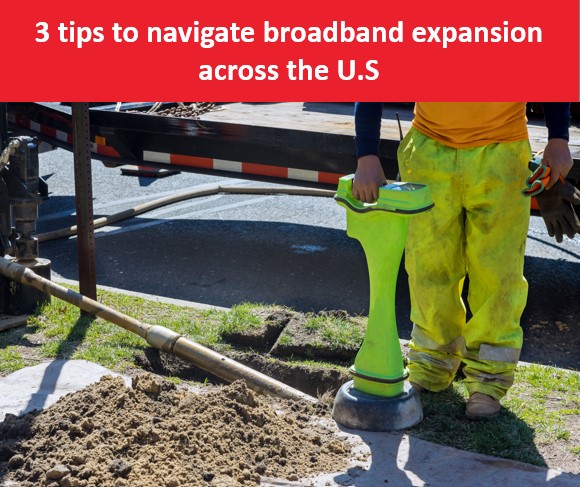
- Field Service Management
- Field Service Software
- Finance
- ISP
- P&L
Navigating ISP Growth – Part 1: Transformative effects of FSM on P&L
NAVIGATING ISP GROWTH. PART I: FROM COSTS TO REVENUE
Over the past several years, the telecommunications industry in the US has been focused on closing the digital divide and making sure every household has access to broadband services. Federal and local funding have been used to support several technologies, but it is fair to say that a strong focus has been put on fiber, as many argue this is the future-proof technology.
Evolving KPIs and the Critical Phase for ISP Businesses
Despite – or perhaps because of – the amount of public funds invested, the industry has seen a shift in the past several months. As an increasing number of miles of fiber are laid out, the main KPI that investors and specialists are focused on is the number of homes passed, viewed from a capital expenditure (CAPEX) perspective. However, as the industry and the economy as a whole enter a new phase, there is now an emphasis on KPIs that impact all aspects of the P&L: take rates, customer satisfaction (C-Sat) and churn.
This phase is critical and, if not handled properly, can make or break an ISP business. It represents a period of growth in customers, related installations, and maintenance operations and the skills required from a field perspective during this phase are even more challenging than those needed for the construction phase. You will have to deal with an increasing high volume of shorter and customer-facing jobs, which present challenges where FSM plays a crucial role, especially in regard to your revenue growth, profitability and long-term scalability.
This is the reason why any broadband service provider entering or expecting to soon enter this phase should carefully consider field service management (FSM) as a key tool to leverage to improve its P&L. In this post, we will explore how proper FSM software can significantly impact your financial KPIs.
Converting Homes Passed into Active Subscribers: Prioritizing a Seamless Customer-First Experience
The first and most important challenge of this new phase is to convert your homes passed into active subscribers. In that phase the customer-first experience will be critical.
You want to ensure that your prospects who are not yet active subscribers but have expressed interest in your offering have the most streamlined experience possible. The main reason is that if you are building your network, you may be competing with incumbent providers who have all the infrastructure in place and can accommodate a new request very quickly. You don’t want your customers’ experience to feel like you are far behind. This applies to the appointment booking process for the first installation, the communication with the customer until the installation is completed, and the behavior of the field technician who will perform the job, whether it is in-house or through a contractor. It will also be critical to ensure that the job is – as much as possible – done right the first time.
Essential Field Service Software Capabilities
While the right FSM software may not address every issue, it can significantly assist you. There are essential capabilities that you’ll want to verify:
1. Appointment booking capability:
An appointment booking capability that easily integrates via open APIs is critical. It is likely that the installation process will be part of a larger process involving your NOC (for drop validation for instance), your finance team (credit validation), your sales team, etc. It is even better if the system offers self-service capabilities, ones that you can embed in your website, or via a standalone customer portal. In order to guarantee that the promised service will be delivered, you will need to make sure that the slots made available are determined using real-time data regarding skillsets, geographical locations, availability, travel durations, etc.
2. Integrated real-time notification capability:
This can be, for example, a text message sent to the customer when the technician is on his way to the job location, or automated reminders sent a day, if not a couple of hours, in advance.
3. Integrated workflows capability:
For each job type, you will want to make sure that the technicians get specific instructions while they perform the job. This will require conditional logic, controls over the quality of the data they capture, and has to be delivered in a step-by-step manner via a mobile application. This ensures that your field teams deliver the best customer service, regardless of their seniority or contractual status. Additionally, the workflows should possess the capability to trigger, directly from the mobile application, a line testing process. This process aims to validate the correct installation and provisioning of the new customer in the network, ensuring that the installation is done right the first time.
If a situation arises that the technician is not able to solve without support, the FSM solution should give the technician access to remote, video-oriented, assistance provided by an expert working with the NOC, for example.
4. Offline mode capability:
These workflows should include the ability to work offline to address situations where the job is performed in an area with little or no connectivity.
Conclusion
These examples illustrate how the right Field Service Management solution positively impacts your customer experience, guaranteeing a smooth and efficient installation process. This, in turn, increases take rates and your active subscriber base while influencing the top-line KPIs of your P&L.
We all know, as consumers, how important the first impression is. To stay ahead of the competition and grow your revenue, you need to provide a best-in-class customer experience. Satisfied customers not only leave good reviews, driving new business, but they are also more likely to purchase other products (wi-fi, data protection, etc.) that can be bundled into your offerings, generating additional revenue.
Ensuring a best-in-class employee experience for your field technicians is also critical, as they play a pivotal role in your service delivery. This paves the way for a smooth, consistent and robust transition from the construction phase to the run phase of your network operations. As your business grows, scalability becomes a key consideration, which is the topic of the second part of this article.
DISCOVER THE PRAXEDO ADVANTAGE
Praxedo has been a trusted provider of field service management (FSM) solutions for companies across the globe since 2005. Our success is attributed to our unwavering focus on delivering the best FSM tools in the market. Unlike other providers, we don’t aim to supply all enterprise applications. Instead, we prioritize our expertise in FSM and offer a cloud-based solution that streamlines deployment from start to finish.
Today, more than 1,300 companies including large enterprises and SMBs, and 60,000 users across the globe rely on Praxedo daily to optimize their field service operations. Our solution enables them to increase productivity, optimize resources, and facilitate seamless data exchanges between field personnel such as technicians and engineers, and their dispatchers.
Want to learn more? Schedule a demo today.
Our similar articles.
-
- Field Service Management
- telecommunications
- broadband
Telco field service teams: 3 important tips to navigate broadband expansion in the U.S
February 8, 2023 -
- Productivity
- Field Service Management
- Optimization
The 7 challenges of successful field service management
April 30, 2018 -
- Field Service Management
- telecommunications
- broadband
- fiber optic deployments
Telecom and fiber deployment professionals: What to look for when seeking field service software
December 24, 2022



